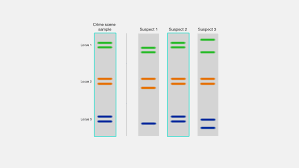DNA Identification And Air India Boeing 787 Dreamliner crash:

After the Air India Boeing 787 Dreamliner crash in Ahmedabad, authorities are using DNA analysis to identify the remains of those killed in the accident.
- DNA identification is the gold standard for identifying human remains, especially after mass fatality events in which bodies might not be easy to identify otherwise.
- Collection and Storing samples of DNA
- As soon as an individual dies, their DNA begins to degrade.
- DNA survives much better in cold and dry conditions, than when it is hot and humid. Once collected, stored in as cool and dry an environment as possible.
- DNA samples should be frozen at minus 20 degrees Celsius, or, in the case of soft tissues (skin, muscles, etc.), they may be stored in 95% ethanol.
- DNA from soft tissues degrades much faster than that from hard tissues (bones and teeth).
- This is because cells in hard tissues are largely protected from the effects of putrefaction and decomposition.
- Methods to analyse DNA Samples
- Short tandem repeat (STR) analysis: It evaluates short tandem repeats, which are essentially short repeating sequences of DNA. STRs are used for DNA identification as they widely vary between individuals. “After analysing 15 or more of these hyper-variable regions of DNA… the resulting profile can be used to ascertain family relationships with a high degree of confidence.
- Mitochondrial DNA (mtDNA) analysis:
- It is used when nuclear DNA is degraded or unavailable.
- Mitochondrial DNA is found within the cell’s energy-producing organelles known as mitochondria.
- Y chromosome analysis:
- Humans have two types of sex chromosomes, X and Y: biological males typically have one X and one Y chromosome, and biological females typically have two X chromosomes.
- In this method, a panel of STR on Y chromosomes, passed on from father to son, is examined to match the remains of the victim with their male relatives. “This can be useful when close relatives are not available for comparison: any member of the paternal line, including brothers, paternal uncles, and paternal male cousins, may be used for matching,”
- Single Nucleotide Polymorphisms (SNPs) analysis: It is used when the DNA to be analysed is highly degraded. A SNP is a variation in the DNA sequence where a single base — A, C, G, or T — at a specific location differs among people.




